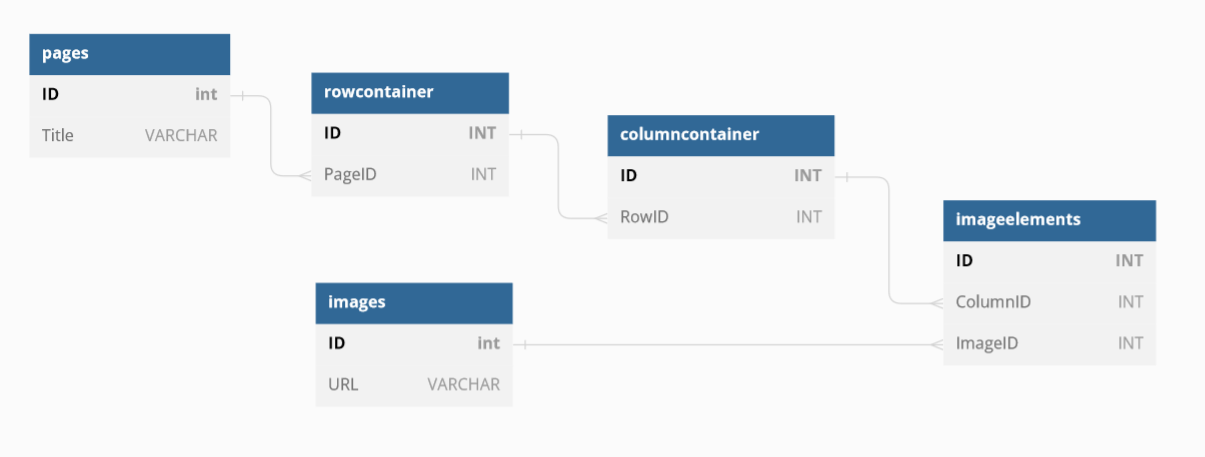A REST API service for managing elements on a page
- Clone the repository
- Open the terminal in the cloned directory
- Run the below command:
docker-compose up
Wait for the app to run and then open http://localhost:8080/api/v1/images to check it.
Use the Postman API collections to consume APIs.
You can also run locally using
npm install && npm startcommand
Run the below command in the repository directory:
docker-compose -f docker-compose-test.yml up
or test locally using
npm testcommand.
npm run serve
This service allows you to create dynamic pages. Each page can have several Rows and inside each row, you can have several Columns. Inside columns, you can add elements like Images, Texts, Quote, etc. (Currently, only the Image element is implemented).
- NodeJs
- Express
- MySQL
- Mocha + Chai for testing
- StandardJS + Flow for linting type checking
The following database scheme is used to store the hierarchy of pages.
There is an independent Images entity where users can add images and use them in image elements.
Database constraints are used to prevent the deletion of images if they are in use on a page.
This design allows customizing Rows, Columns and elements independently and making them reusable (for example in a templating feature). But retrieving data is expensive because it requires multiple joins. With the growth of page elements, the performance will decrease.
We can improve this design using denormalizing the data and therefore reducing the number of SQL joins. But another good solution would be using a non-relational database like MongoDB. In MongoDB we can store the whole page as a single document and avoid heavy traditional SQL queries. Using MongoDB also simplifies the application because the page data is unified and saved in one place.
I would do the following if I could find some time:
- Use sequelize ORM and remove manual SQLs to increase reliability, readability, and maintainability
- Allow uploading images and storing them in AWS S3 or locally (in MinIo for example)
- Use validator libraries like express-validator
- Complete the tests
- Develop UI
- Handle all database constraint errors
- Use MongoDB instead of a relational database
